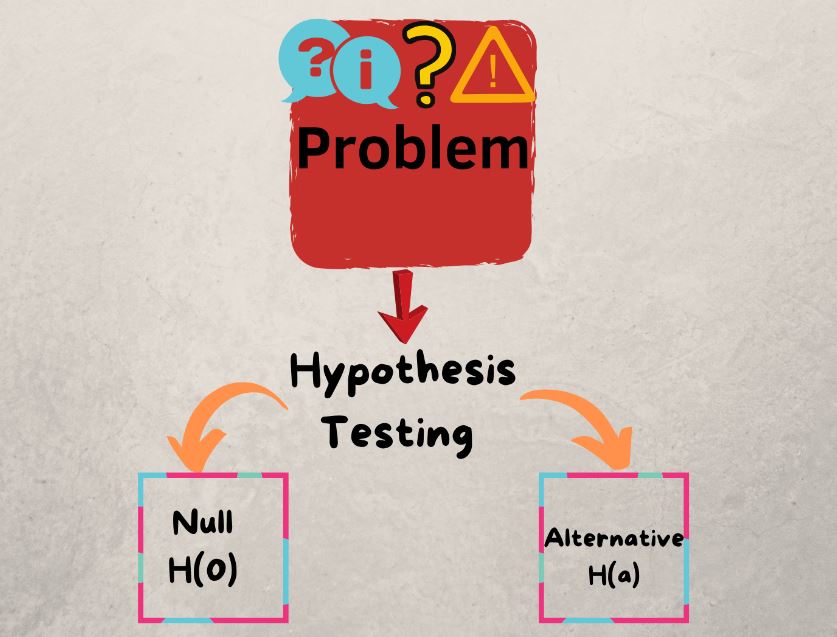
Hypothesis testing tells us if our experiment’s results are meaningful. After hypothesis testing, you can determine if the results were random or significant. Chances make replication difficult or impossible. But if it is due to a particular case, understanding will enable us to repeat the outcomes repeatedly.
In this course, you’ll learn some core principles linked to hypothesis testing and how they may drive process improvement, control, and design. In the analysis phase of a Lean or Lean Six Sigma improvement project, the team does statistical studies to identify variables and their relationships. It can improve business processes. To compare means, you’ll master numerous hypothesis test designs. The course follows ASQ’s 2015 Six Sigma Green Belt Body of Knowledge.
Hypothesis testing—what do you know?
A hypothesis is a notion concerning variable relationships. Statistical analysis determines if differences between two or more samples are due to chance or fundamental differences.
Basics
- Hypothesis Testing – Value judgments about a population are hypotheses. It makes a population inference. A design engineer can hypothesize about the performance or quality of the products she is about to manufacture based on experience. Still, you must verify the hypothesis to ensure the products meet client specifications. The hypothesis must be tested to see if empirical evidence supports it.
- Practical Importance – Practical importance is the degree of difference, change, or improvement that will offer an organization practical, economical, or technical value.
- Statistical significance is the level of difference or change needed to identify a true difference, change, or improvement from a chance event. The larger the sample size, the observed difference is closer to the actual difference.
- Null – State the hypothesis first. H0 means “H sub-zero,” and the assertion is H0: μ = 20%. A null hypothesis posits no difference between or among the evaluated factors and often contradicts the testing’s goal. Ho symbolizes the null hypothesis.
- Alternative Hypothesis – If the theory is accepted, 20% of problems will be CPU socket-related. But if enough evidence is statistically provided that the null hypothesis is untrue, an alternate hypothesis should be assumed true. If H0 is rejected, H1 states the conclusion—H1: µ ≠ 20%. An alternative hypothesis assumes at least one parameter difference.
- Test stats – The population sample determines whether to reject H0 or not. To reject H0, generate one number. It is called test statistics.
- Decision Rule Determination – The decision rule decides when to reject the null hypothesis. The critical value divides the area where H0 is rejected from where it is assumed true.
- Decision-making – The null hypothesis is accepted or rejected. Whether to reject a null hypothesis depends on the significance level, usually between 0.01 and 0.10.
- Testing a Population Mean – The Z formula can test a mean null hypothesis for samples more significant than 30 and known.
- Phrasing – The null hypothesis is rarely “accepted” in the hypothesis. Six Sigma Black Belts can reject the null hypothesis and accept the alternate hypothesis or fail to reject it. This wording is akin to the jury’s statement that the defendant is not guilty, not that the defendant is innocent.
- Sample Size – The sample size (n) for hypothesis testing has been assumed. The error will determine the critical value of the test statistic that you can tolerate.
Six Sigma Green Belt Hypothesis Testing: Why?
Six- sigma green belt managers use statistics and formulas. In a Six Sigma project, the manager makes crucial decisions based on statistical inferences. Hypothesis testing gives these decisions more confidence because they aren’t just based on the mathematical differences between two samples.
Coal quality affects electricity output. Consider a six-sigma green belt thermal power plant. As the six-sigma green Belt project manager, you want to determine if coal grade affects power generation statistically.
Hypothesis testing lets you choose a null hypothesis, determine alpha and beta risks, and calculate the test statistic or p-value. It will inform your coal quality and power generation theory.
Six Sigma Hypothesis Testing Advantages
Hypothesis testing determines a result or difference in a Six Sigma process improvement exercise. Using statistics to test your hypothesis can tell you if the changes in your process were due to process improvement or were just a coincidence.
Hypothesis testing helps you track project progress and improve your product or service. Hypothesis testing proves statistical significance. Six Sigma hypothesis testing examples can determine whether your product or service needs improvement.
Non-representative samples may skew a sample-based judgment. A hypothesis test turns a real-world problem into a statistical one by figuring out how likely it is that a sample is not representative of the whole.
Processes may have to center or spread issues. Hence, the two methods may have different means or variances. Both show distribution differences. Hypothesis testing can determine if the data sets differ statistically.
How do I become one?
The mock Six Sigma Green Belt test is entirely free. Simplilearn offers online Six Sigma Green Belt courses. Understand “hypothesis testing.” Practice for free.
The Six Sigma Green Belt Professional certification from Simplilearn online learning platform tests how well candidates can set up, manage, and maintain a quality system. Candidates are tested on lean and Six Sigma principles, DMEA, QFD, data collection, statistical analysis, and process control.
Six Sigma Green Belt certification training gives you a realistic view of Six Sigma tools.
What will you study?
- Fixing quality issues
- Learn statistical methods.
- Recognize and fix process flaws
- Apply DMAIC ( Define, Measure, Analyze, Improve, Control)
Six Sigma Green Belt Professional credentials can help candidates stand out in today’s competitive job market, expand their employment options, and boost their earnings.
How can this qualification benefit you?
Six Sigma green belt knows business and statistics. Companies value the six-sigma green belt for their functional understanding and process improvement experience.
Six Sigma Green Belt leads projects and does team building. They also help Black Belt team leaders gather data.
Final words
Hypothesis testing improves the quality of data analysis and production control. Hypothesis testing shows that descriptive statistics like the arithmetic mean, sum, and range do not give a complete picture of product or service quality. Hence, the Lean six sigma green belt course helps you gain in-depth knowledge about hypothesis testing.







